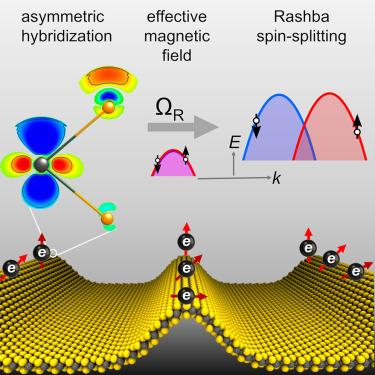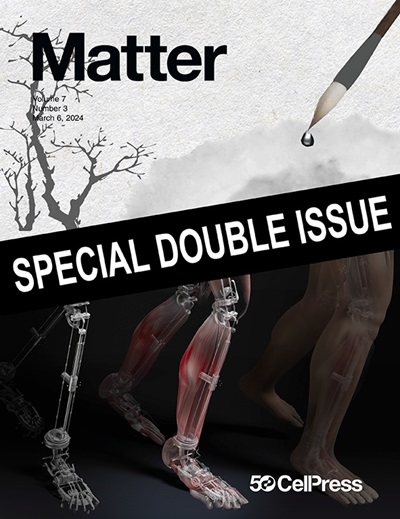Mechanical crease in 2D materials—A platform for large spin splitting and persistent spin helix
IF 17.5
1区 材料科学
Q1 MATERIALS SCIENCE, MULTIDISCIPLINARY
引用次数: 0
Abstract
Spin-based information processing promises energy-efficient next-generation electronics, crucial amid the growing energy demands of artificial intelligence. Materials with large spin-split electronic states with exotic persistent spin helix (PSH) texture are critical for such devices; however, only a few materials in nature meet the strict symmetry requirements for PSH texture, limiting material options. We report the striking phenomenon that mechanical crease, unique to 2D materials, enables spin splitting and PSH texture by inducing flexoelectric polarization and asymmetric hybridization. Using first-principles calculations and analytical models, we demonstrate this effect in various 2D materials and reveal two critical features, curvature-induced band shifts and flexoelectricity-driven spin splitting, which are essential to create PSH texture. Notably, bent 2D MoTe2 exhibits high spin splitting of ∼0.16 eV and an attractively small spin precession length of ∼1 nm, the best known. This work reveals a fundamental design framework to create elusive PSH states in 2D materials, opening exciting avenues for spin-based electronic devices.

二维材料中的机械折痕——大自旋分裂和持续自旋螺旋的平台
基于旋转的信息处理有望实现节能的下一代电子产品,这在人工智能日益增长的能源需求中至关重要。具有大自旋分裂电子态且具有特殊持续自旋螺旋(PSH)织构的材料对于此类器件至关重要;然而,自然界中只有少数材料符合PSH纹理的严格对称要求,这限制了材料的选择。我们报告了一种引人注目的现象,即二维材料特有的机械折痕通过诱导挠曲电极化和不对称杂化来实现自旋分裂和PSH织构。利用第一性原理计算和分析模型,我们在各种二维材料中证明了这种效应,并揭示了两个关键特征,曲率诱导的带位移和柔性电驱动的自旋分裂,这是创建PSH纹理所必需的。值得注意的是,弯曲的2D MoTe2具有高自旋分裂(~ 0.16 eV)和引人注目的小自旋进动长度(~ 1 nm),这是最著名的。这项工作揭示了一个基本的设计框架,在二维材料中创建难以捉摸的PSH状态,为基于自旋的电子设备开辟了令人兴奋的途径。
本文章由计算机程序翻译,如有差异,请以英文原文为准。
求助全文
约1分钟内获得全文
求助全文
来源期刊

Matter
MATERIALS SCIENCE, MULTIDISCIPLINARY-
CiteScore
26.30
自引率
2.60%
发文量
367
期刊介绍:
Matter, a monthly journal affiliated with Cell, spans the broad field of materials science from nano to macro levels,covering fundamentals to applications. Embracing groundbreaking technologies,it includes full-length research articles,reviews, perspectives,previews, opinions, personnel stories, and general editorial content.
Matter aims to be the primary resource for researchers in academia and industry, inspiring the next generation of materials scientists.
 求助内容:
求助内容: 应助结果提醒方式:
应助结果提醒方式:


